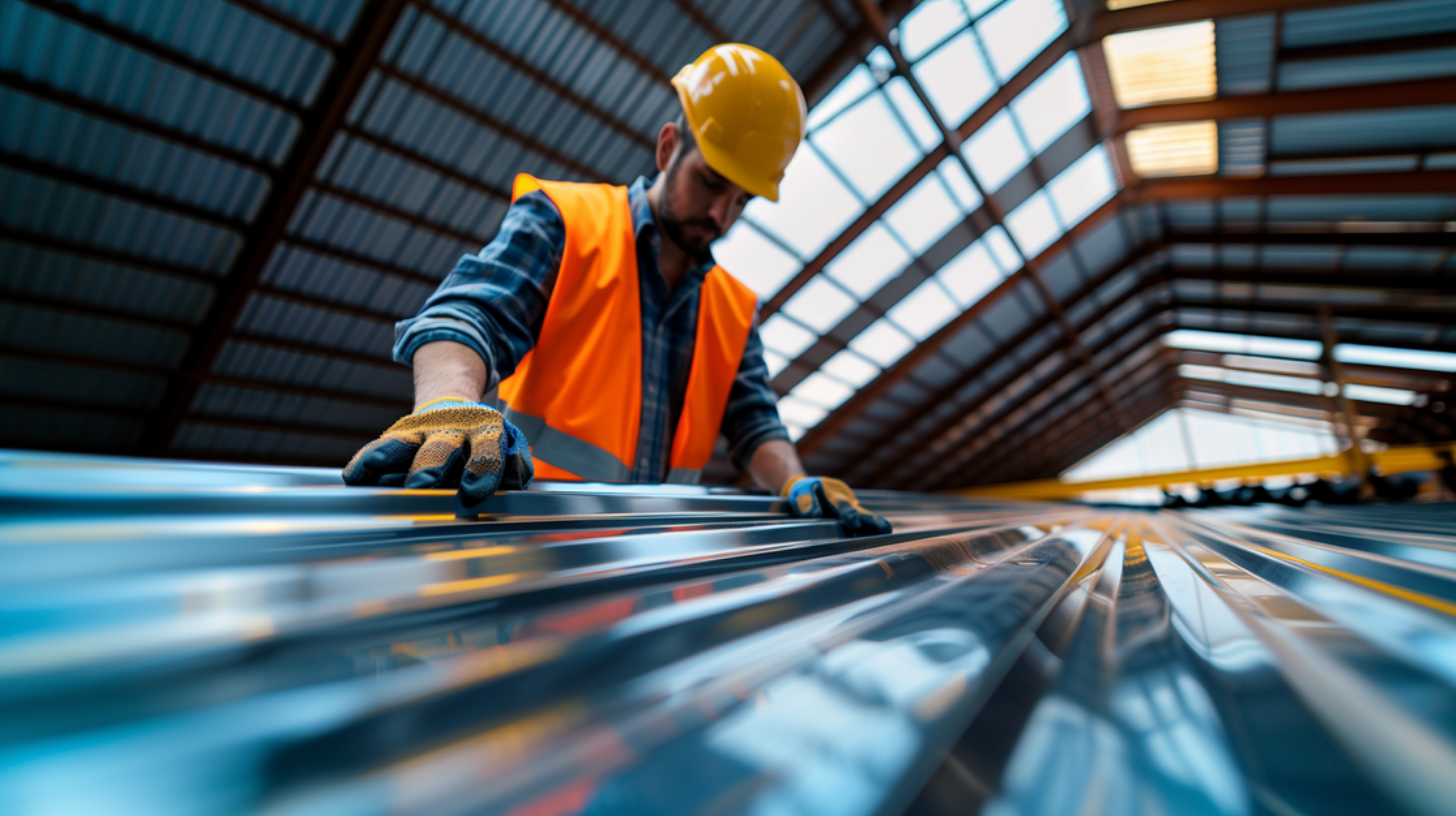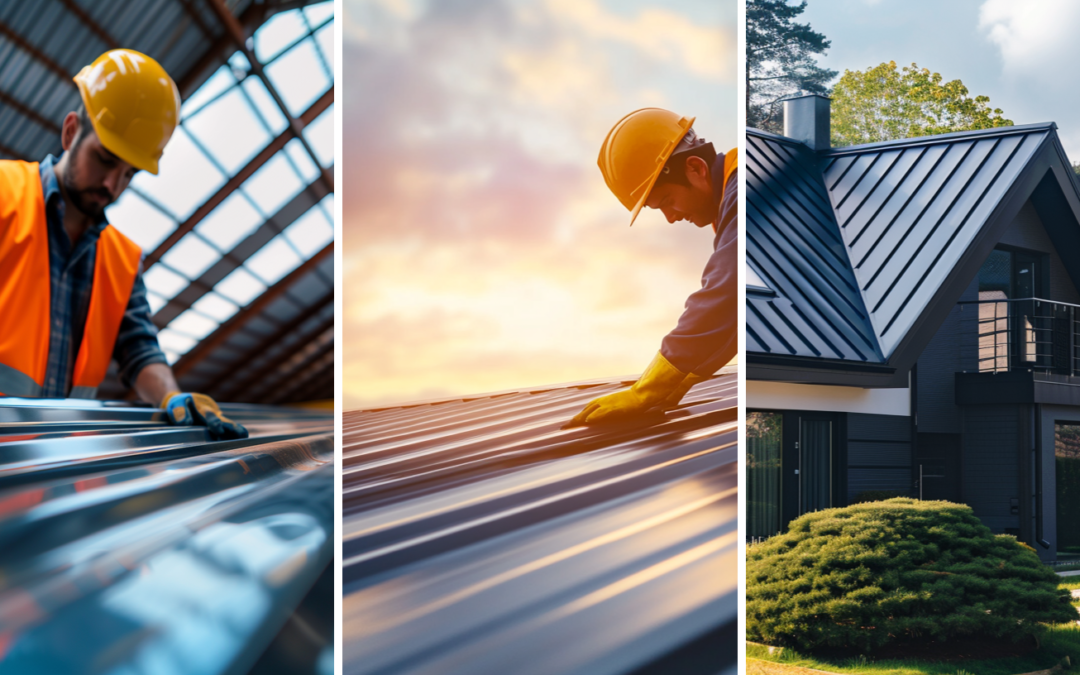Introduction to Recyclability of Metal Roofs
Nearly 70 million tons of domestic steel scrap is repurposed in new steel production each year, highlighting the economic viability of reusing materials. Steel, renowned for having the highest recycling rate among construction materials, ensures that when a metal roof reaches its end, its components can be efficiently transformed into new products rather than ending up in landfills.
This sustainable approach benefits the environment and offers substantial economic advantages for home and building owners, making metal roofing an ideal choice for those conscious of its impact on the planet.

Recyclability - The Recyclability of Metal Roofing - Sky Roofing Construction & Remodeling
The Recyclability of Metal Roofing
It’s important to understand the various aspects of metal roofing recyclability, including its environmental advantages, the recycling process, and the potential benefits for home and building owners. Understanding how metal roofing can contribute to a more sustainable future can empower property owners to make informed choices that align with their values while enhancing the resilience and efficiency of their structures.
Recyclability Rate of Metals
Furthermore, choosing recycled aluminum contributes to substantial energy savings; it requires only about 5% of the energy needed to produce aluminum from virgin materials. This reduction in energy consumption lowers production costs and lessens the environmental impact of metal production.
As home and building owners weigh the benefits of various materials, the recyclability and the significant energy savings of using recycled metals like aluminum stand out as critical factors in making sustainable choices.
Closed-Loop Recycling Process
The electric arc furnace (EAF) is a key player in this efficient recycling system, enabling steel products to be produced with up to 100% recycled content. By choosing metal roofing systems, homeowners contribute to waste reduction and embrace sustainable construction practices that align with LEED certification requirements.
This commitment to recycling and energy efficiency helps foster eco-friendly communities while ensuring the construction industry moves towards a more sustainable future.

Recyclability - Environmental Benefits of Metal Roofing - Sky Roofing Construction & Remodeling
Environmental Benefits of Metal Roofing
This sustainable material reflects solar heat, contributing to lower energy costs and a more comfortable indoor climate, ultimately supporting eco-friendly building practices. Additionally, as metal roofs are often made from materials in high demand for recycling, such as copper, homeowners can benefit financially when they opt for this roofing type.
By choosing metal roofing over traditional roofing materials, homeowners and building owners invest in durability and longevity, crucial in promoting sustainability and environmental stewardship. Traditional roofing materials like asphalt shingles contribute to landfill waste and have a shorter lifespan than metal roofing, making metal roofing a superior choice for those looking to reduce their environmental impact.

Recyclability - Economic Advantages of Metal Roofing - Sky Roofing Construction & Remodeling
Economic Advantages of Recyclable Metal Roofing
By choosing recyclable metal roofing, individuals can contribute to environmental preservation and reap financial benefits in the long run. The economic implications of investing in recyclable metal roofing are noteworthy, from reduced energy costs to potential tax incentives.
Cost Savings from Recycling
Recycling metal roofing reduces landfill waste, allows valuable metals like copper to be recovered, and potentially yields financial incentives for builders and homeowners alike. This sustainable choice supports a greener environment and leads to lower cooling expenses and a reduced carbon footprint.
By understanding the impact of recycling in the context of metal roofing, property owners can make informed decisions that benefit both their finances and the planet.
Long-Term Financial Benefits
While the initial investment may be higher, homeowners and building owners can enjoy reduced energy costs, lower operational expenses, and the potential for tax incentives that make the upfront cost more palatable. Furthermore, embracing sustainability enhances brand loyalty and positively impacts brand image, attracting environmentally conscious customers and increasing revenue.
By viewing metal roofing as a long-term investment, property owners can reap substantial returns far beyond the initial expenditure, reinforcing the benefits of choosing a recyclable option for their roofing needs.
How to Ensure Your Metal Roof is Recyclable
Additionally, check with your roofing contractor to see if they offer recycling services, as many contractors are committed to eco-friendly practices. Once the metal roofing materials are removed, they enter the recycling process, where they are collected, shredded, melted down, and purified. This transformative process enables the creation of new metal products while significantly reducing waste.
The federal government supports recycling initiatives and offers resources and guidelines to promote sustainable practices. By leveraging these resources, homeowners and builders can make more informed decisions regarding the recyclability of their metal roofs.
By taking these steps, homeowners and building owners can contribute to a more sustainable future and make informed decisions about their metal roof’s recyclability. Choosing recyclable materials benefits the environment today and ensures a healthier planet for future generations.
Transform Your Home with Sustainable Metal Roofing Solutions
Metal roofing’s recyclability offers numerous environmental and economic benefits, making it an excellent choice for homeowners and builders. Opting for metal roofs contributes to resource conservation, energy efficiency, and waste reduction, ensuring a sustainable future for future generations. Contact Sky Roofing Construction & Remodeling (https://skyroofingconstructiontx.com/) today at (210) 942-9797 to schedule a roofing consultation and discover how to make an eco-friendly choice for your home.
Willis Vachon is a seasoned contributing writer for Sky Roofing Construction & Remodeling, specializing in the technical and safety aspects of roofing construction. With a keen eye for detail and a passion for ensuring quality and safety in every project, Willis provides valuable insights that help both professionals and homeowners make informed decisions about their roofing needs.

